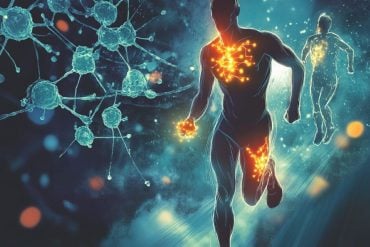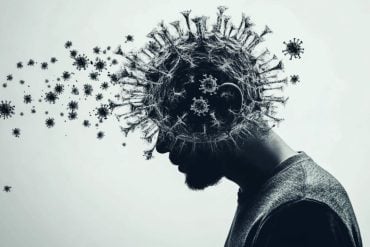Summary: When teaching a child to read, giving them challenges individually adapted to their levels is most effective.
Source: NTNU
Reading is the basis for most subjects, but a lot of children struggle to master it. Every fourth Norwegian boy aged 15 does not understand a complicated text. Girls do better.
But new research shows very promising results in the effort to help pupils learn to read. It is important to give students challenges that are individually adapted to their level. Teaching all pupils the same way is not useful because many fail to keep up.
“The previous study round included 48 students who took part in our approach, and every one of them cracked the reading code,” says Hermundur Sigmundsson, a professor at Norwegian University of Science and Technology’s (NTNU) Department of Psychology.
Sigmundsson has worked on reading education for many years. This time he has taken his expertise to Vestmannaeyjar in Iceland, where first-graders tried a new way to learn and master the art of reading.
“We concentrated on changing everyday school life for the pupils,” says Professor Sigmundsson.
Children follow a strict schedule
The children follow a clear plan throughout the school day.
- Before lunch, the children first learn basic skills such as reading, mathematics and science. During the first two to three hours, they also need to be physically active.
- After lunch comes the practice lesson. In the first year of school, the instruction places great emphasis on reading skills. The training provides targeted practice and introduces the connection between letters and the sounds that follow the letters.
- Towards the end of the day, students have their “passion” lesson, in which they can choose from five different subjects, depending on their interest. These include home economics, music, carpentry, sewing or painting/drawing.
“We’ve developed a procedure called READ. It emphasizes the most important methods for learning, psychology, motivation theory and targeted practice,” Sigmundsson said.
“The key is to survey children’s skills at the start of the school year, in September, and in January and May, which enables us to provide the right challenges in relation to skills,” he said.
Outstanding reading results
The reading results have been outstanding. Just look at the results for single words, sentences and text:
- Single words: In September, 58 percent of pupils in first grade could read single words. They had already cracked the reading code. Come May, the percentage had risen to 100 percent. In other words, everyone could read single words.
- Sentences: In September, 28 percent of first graders could read sentences. In May, the percentage was 96 percent.
- Connected text: In September, just over 8 percent could read connected text. In May, that number had risen to 88 percent.
In a similar Norwegian study, 73 percent of pupils cracked the reading code by May. The Norwegian study used the same survey-based test, but not the same method.
Benefits for well-being, too
“We think the Vestmannaeyjar results are very important,” says Sigmundsson. “This approach results in satisfied children, satisfied teachers and satisfied parents.”
The results have recently been published in the first article on the project’s development and research in Iceland, which will provide instruction for about 50 new children every year for 10 years. The researchers will also follow up on the children later. The project is called Kveikjum neistann! or “Ignite the spark!” in English.
The most important reasons for addressing reading skills and changes in everyday school life are to improve children’s reading results and well-being at school,” Sigmundsson said. “We’ve observed significantly improved well-being results in the group that completed the programme compared to the previous year’s first graders.”
Biggest problem among boys
Problems with reading are far more common among boys than girls.
“In Iceland, we have particular challenges with reading among boys and immigrants,” Sigmundsson said.
Thirty-four per cent of 15-year-old boys in Iceland are unable to read well enough to understand the text, according to the international PISA survey from 2018. In Norway, the figure for boys is 26 per cent.
“These children don’t have the reading skills that enable them to understand the text. This has been the case for 18 years. In Norway, the percentage varies from 21 to 26 per cent of boys,” he said.
Girls do much better on the whole, but five to nine per cent still struggle.
“We don’t find this acceptable. Biologically, the proportion should be around 2 to 4 per cent,” he said.
Programme in Iceland is impressive
“I am very impressed by the Vestmannaeyjar project that Sigmundsson is running,” said Hanne S. Finstad, PhD. and the founder of Forskerfabrikken, a social enterprise that engages children in hands-on learning and discovery.
Finstad believes the READ programme is ground-breaking in many ways because it is not only based on pedagogy and psychology, but also on the pupils’ biological needs.
“Time is set aside for repetition and deepening skills, and that is something our memory needs to really learn. Students also have the opportunity to develop creatively and musically, in addition to having physical activity every day. The school day is arranged to develop both body and soul,” says Finstad.

Reading education is based on what we now know about how the brain learns to read, she said.
She agrees that children need to first learn to recognize sounds and connect them to the letters, then combine the letters into words that make sense.
However, Norwegian schools encourage many children to focus on whole words. Researchers who work with the brain and reading fear that a focus on whole words can hamper learning to read because pupils then practise picture recognition instead of actually reading.
ADHD and the new method
More and more boys aged 10 to 14 take ADHD medication. Currently around 15 per cent of boys in Iceland, and 4.9 percent of boys in Norway are being medicated for ADHD. The new method can also help them.
ADHD may be linked to too much sitting still and overly long days. The READ school day therefore never schedules lessons longer than 35-40 minutes. The new programme also incorporates 72 hours more physical activity during the school year. The passion lesson is very important for increasing children’s dopamine level, the hormone that triggers joy and well-being.
The project was supported by Vestmannaeyjarbær, the Icelandic Ministry of Education and Children, the SA Confederation of Icelandic Enterprise and the University of Iceland.
Interested teachers and other professionals can contact Professor Sigmundsson directly for more information. His contact information is below this article.
About this learning and reading research news
Author: Nancy Bazilchuk
Source: NTNU
Contact: Nancy Bazilchuk – NTNU
Image: The image is in the public domain
Original Research: Open access.
“Reading: From the Simple to the Complex” by Hermundur Sigmundsson et al. Brain Science
Abstract
Reading: From the Simple to the Complex
The aim of this article was to present an important perspective on reading skill development.
The perspective ‘READ’ builds on the phonics approach which has been found to be most important in relation to reading achievement i.e., to teach children to break the reading code. In addition, READ builds on theories within learning and skill development.
The Ericsson concept of ‘deliberate practice’ refer to baseline measurements that provide a basis for follow-up and deliberate practice.
The concept of ‘flow’ is also of great importance where challenges are always in relation to the skills. It means that each child will be able to experience ‘flow’ where mastery is the key word, feeling I CAN!
When mastery is experienced, the dopamine hormone gives the feeling of reward. Stimuli, experience, and repetition is also a key word in the ‘training hour’ where children get the possibility to strengthen the neural network that is used for specific skills which are trained. In this respect, the letter-sound knowledge is trained until the child has broken the reading code.
The results from the first year in the school in Vestmannaeyjar in Iceland indicates that all the children were able to break the reading code or read simple words. In addition, 96% of the children were able to read sentences, and 88% where able to read text.
These promising results are discussed in relation to Ericsson’s and Csikszentmihalyi’s important theories.






